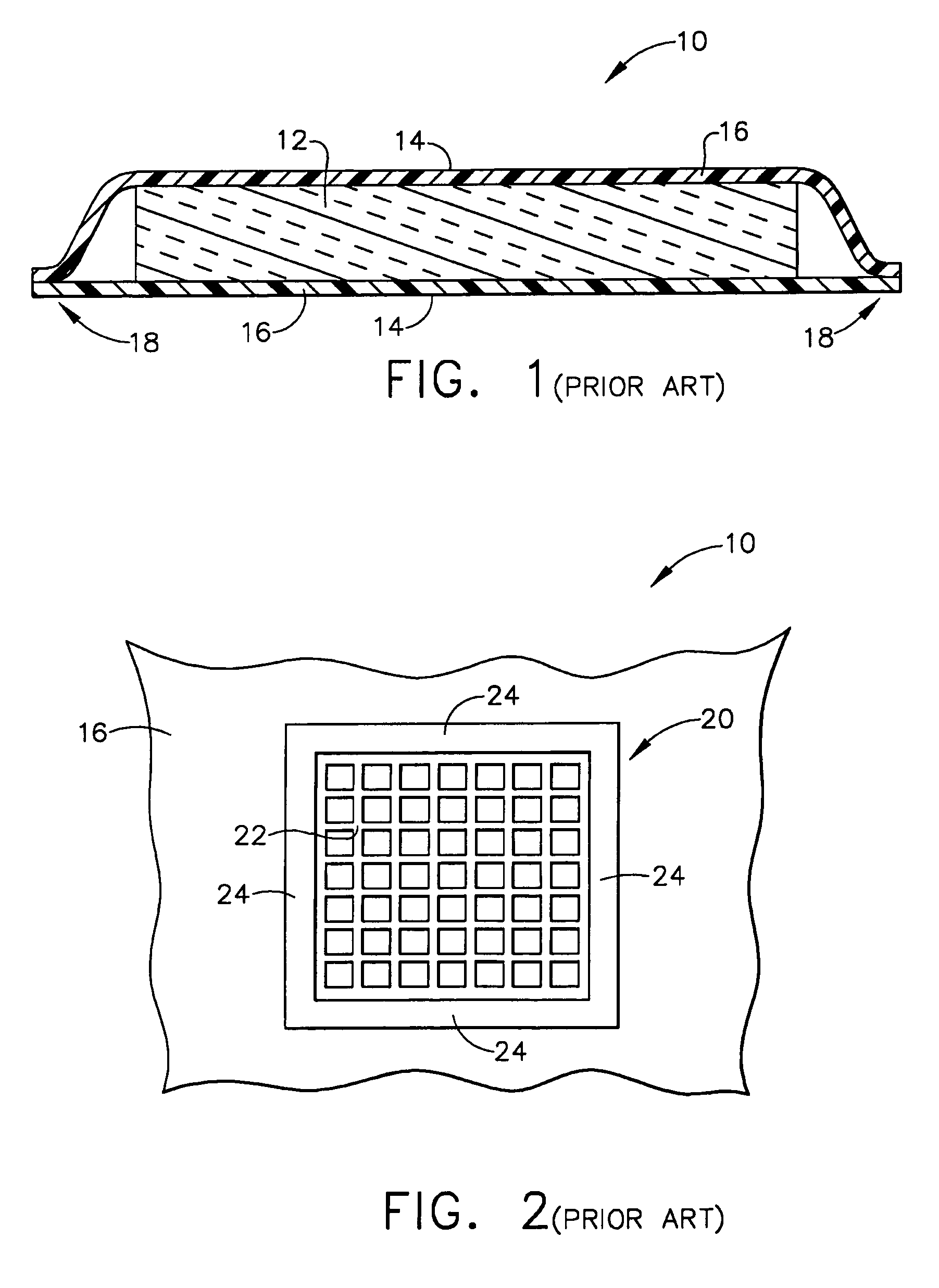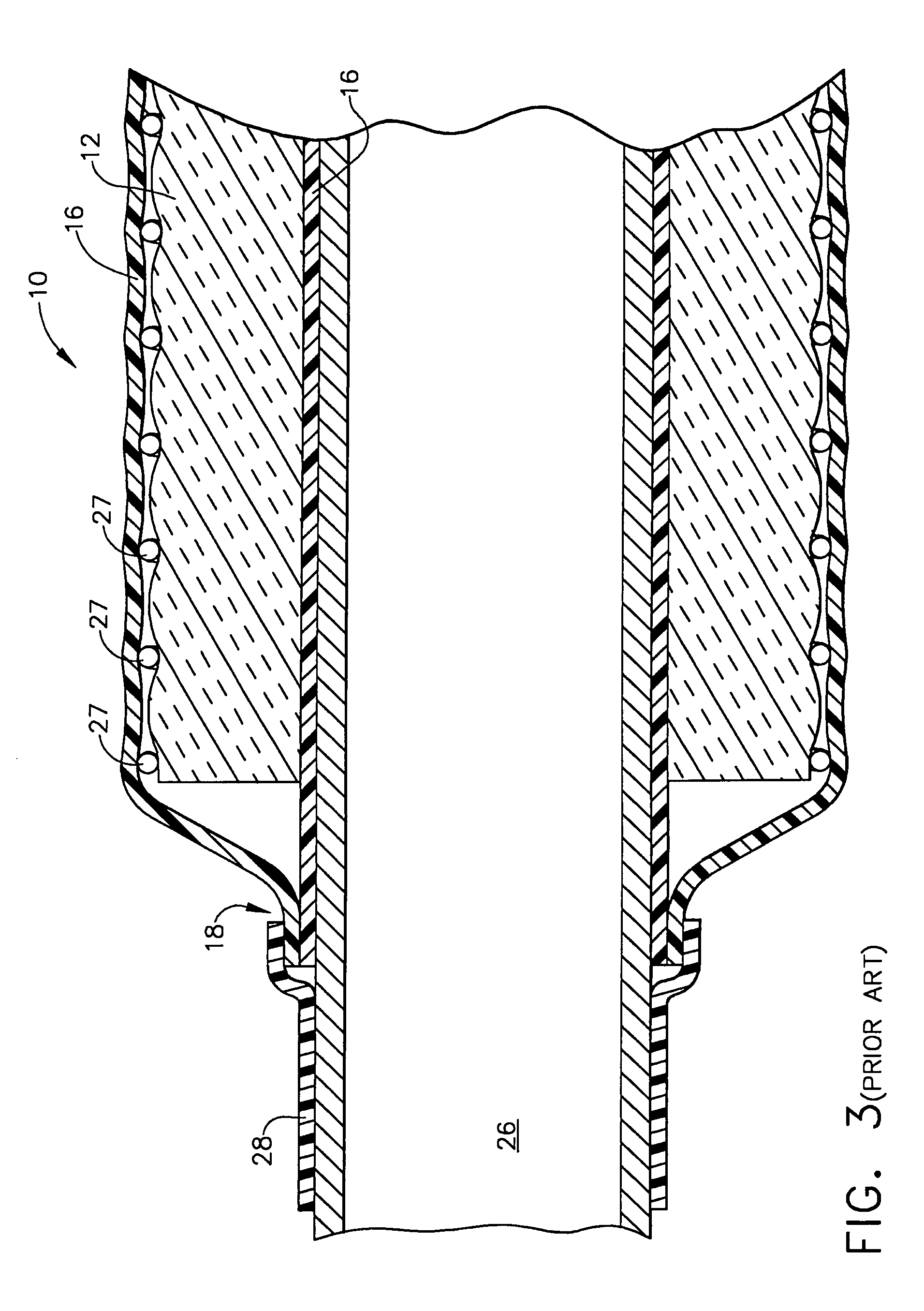Modularized insulation, systems, apparatus, and methods
a technology of modular insulation and insulation properties, applied in heat-proofing, natural mineral layered products, transportation and packaging, etc., can solve the problems of shortening the useful life of aircraft, affecting the efficiency of aircraft, so as to reduce the cost and labor intensity of installation, prevent or minimize the shifting of batting blocks, and reduce the effect of insulation properties
- Summary
- Abstract
- Description
- Claims
- Application Information
AI Technical Summary
Benefits of technology
Problems solved by technology
Method used
Image
Examples
Embodiment Construction
[0045]The following detailed description should be read with reference to the drawings, in which like elements in different drawings are numbered identically. The drawings, which are not necessarily to scale, depict selected embodiments and are not intended to limit the scope of the invention.
[0046]For purposes of illustration, the below discussion will focus on the use of insulation blankets in aircraft but it should be understood by those skilled in the art that the various embodiments of insulation blankets according to the invention can be utilized in a variety of applications, including but not limited to homes, buildings and other structures, piping and duct work, aircraft, watercraft and the like.
[0047]As previously noted, insulation is typically installed to aircraft interior surface structures, subcomponents and subsystems in order to protect occupants, cargo, and equipment, and to piping and duct work that is part of environmental control systems and water and waste system...
PUM
| Property | Measurement | Unit |
|---|---|---|
| perimeter | aaaaa | aaaaa |
| height | aaaaa | aaaaa |
| thermal | aaaaa | aaaaa |
Abstract
Description
Claims
Application Information
 Login to View More
Login to View More - R&D
- Intellectual Property
- Life Sciences
- Materials
- Tech Scout
- Unparalleled Data Quality
- Higher Quality Content
- 60% Fewer Hallucinations
Browse by: Latest US Patents, China's latest patents, Technical Efficacy Thesaurus, Application Domain, Technology Topic, Popular Technical Reports.
© 2025 PatSnap. All rights reserved.Legal|Privacy policy|Modern Slavery Act Transparency Statement|Sitemap|About US| Contact US: help@patsnap.com



